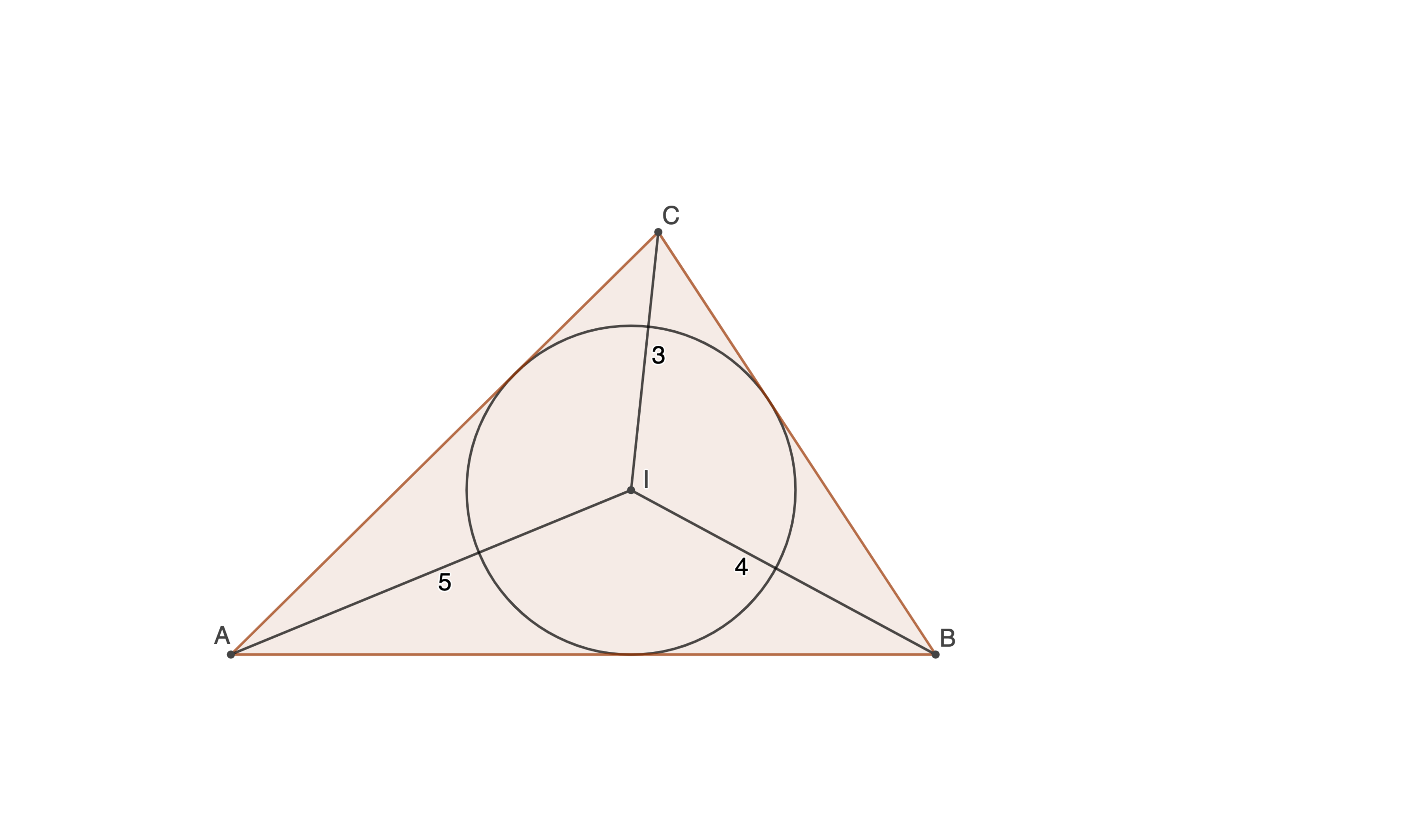Just Another 3-4-5 Triangle

Find the area of the non-degenerate triangle with the distances between its vertices and its incenter, I , equal to 3, 4, and 5.
If K is the area, submit ⌊ 1 0 4 K ⌋ .
The answer is 198877.
This section requires Javascript.
You are seeing this because something didn't load right. We suggest you, (a) try
refreshing the page, (b) enabling javascript if it is disabled on your browser and,
finally, (c)
loading the
non-javascript version of this page
. We're sorry about the hassle.
2 solutions
The way the r 4 terms cancel is suspiciously neat - it makes me think there's a quicker way to get to the cubic. Also, the cubic itself is a bit surprising - I think it means it wouldn't be possible to construct this with straight-edge and compass.
Oh, and in general, that cubic is A I ⋅ B I ⋅ C I 2 r 3 + r 2 [ A I 2 1 + B I 2 1 + C I 2 1 ] = 1
I think this always has a unique positive root, meaning for any A I , B I , C I there is a unique triangle, but I haven't looked into it too rigorously (Descartes' rule of signs seems enough, but I could be wrong).
Log in to reply
Re your last paragraph: Yes Descartes' rule of signs is the key here.
Another great solution by the way.
With an inradius x, I used 2 area formulae to get
x² = √[(9 – x²)(16 – x²)(25 – x²)] / [√(9 – x²) + √(16 – x²) + √(25 – x²)]
Then, using the positive real result of x ≈ 1.9002 to get the area of triangle
= x[√(9 – x²) + √(16 – x²) + √(25 – x²)]
= 19.8877955
Answer
= floor[ 10⁴ × 19.8877955 ]
= 198877
Let the inradius of Δ A B C be r . Recall the incentre I lies on the three angle bisectors of Δ A B C be r . By considering Δ A I C , we have sin 2 C = 3 r
Now, in Δ A I B , we have ∠ I A B = 2 A , ∠ I B A = 2 A and so ∠ A I B = π − 2 A − 2 B = π − 2 A + B = π − 2 π − C = 2 π + 2 C
Also, ∠ A I B = cos − 1 5 r + cos − 1 4 r
Putting these together and taking cosines, cos ( cos − 1 5 r + cos − 1 4 r ) 5 r ⋅ 4 r − 1 − 5 2 r 2 ⋅ 1 − 4 2 r 2 2 0 r 2 − ( 1 − 2 5 r 2 ) ( 1 − 1 6 r 2 ) = cos ( 2 π + 2 C ) = − sin 2 C = − 3 r
Rearranging and squaring, 2 0 r 2 + 3 r 4 0 0 r 4 + 3 0 r 3 + 9 r 2 3 0 r 3 + 9 r 2 = ( 1 − 2 5 r 2 ) ( 1 − 1 6 r 2 ) = 1 − 2 5 r 2 − 1 6 r 2 + 4 0 0 r 4 = 1 − 2 5 r 2 − 1 6 r 2
which after tidying the fractions becomes 1 2 0 r 3 + 7 6 9 r 2 − 3 6 0 0 = 0 This has a unique positive root, around r = 1 . 9 0 0 2 . From here, we can work out the sides using c = A B = 5 2 − r 2 + 4 2 − r 2 and so on; the area is T = 2 1 r ( a + b + c ) = 1 9 . 8 8 7 7 … giving the answer 1 9 8 8 7 7 .